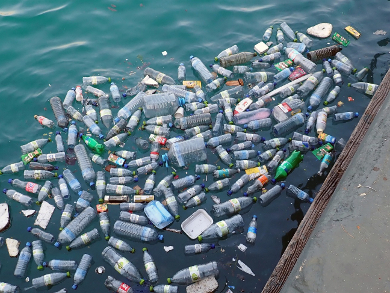Sarah-Jeanne Royer, David M. Karl, University of Hawaii at Manoa, Honolulu, USA, and colleagues have discovered that the degradation of plastic to microplastics under the influence of sunlight releases greenhouse gases such as methane. The scientists studied different types of plastics, e.g., polycarbonate, acrylic, and polyethylene (PE). All of these materials release the greenhouse gases ethylene and methane when exposed to ultraviolet (UV) light. Polyethylene, the most widely used plastic by far, proved to be the most productive emitter of both greenhouse gases.
In addition, the researchers studied what happens when irradiating beads of LDPE (a special form of polyethylene) over a period of 212 days. They found that the longer the plastic particles were exposed to sunlight, the more greenhouse gases they produced. Emission rates continued to increase over time.
This effect is probably due to the progressive disintegration of the plastic. Cracks and pits in the material increase the surface area on which the sun can exert its effect. Once the decay of the plastic has begun, the material emits gases even in the dark. According to the researchers, considering the large amounts and long lifetimes of plastic in the environment, the influence of plastics on the global CH4 and C2H4 concentrations should be investigated further.
- Production of methane and ethylene from plastic in the environment,
Sarah-Jeanne Royer, Sara Ferrón, Samuel T. Wilson, David M. Karl,
PlosOne 2018.
https://doi.org/10.1371/journal.pone.0200574



